Tom's Guide Verdict
Huawei delivers unrivaled battery life, AI-powered dual cameras and a robust feature set in one of the year's most ambitious smartphones.
Pros
- +
Class-leading battery life
- +
Camera detects objects in real-time
- +
Stunning Portrait mode
- +
Strong performance
- +
Handy software features
- +
Minimal bezels
Cons
- -
No wireless-charging support
- -
Frustrating user interface
Why you can trust Tom's Guide
Is there enough room for yet another full-screen phone? That's the question Huawei hopes to answer with the $799 Mate 10 Pro, the company's latest phablet, which leverages artificial intelligence in ways no one has done before.
Huawei bumped up the screen size in the Mate 10 Pro model to 6 inches, shrank the bezels and maximized the battery life. But the biggest change is the Kirin AI processor, which enables real-time objection recognition in the camera in addition to blazing-fast performance. This device is one of the most ambitious smartphones of the year, and a worthy alternative to Samsung's Galaxy Note 8.
Updated May 21
We've updated our review of the Mate 10 Pro based on our in-depth smartphone drop tests. See the results below.
Design: Understated good looks
The bigger that displays get, the less space there is for product differentiation. That could be why Apple didn't mind giving the iPhone X a notch and why Huawei has emblazoned the Mate 10 Pro's bottom bezel with the company logo — just to remind you who made the phone.
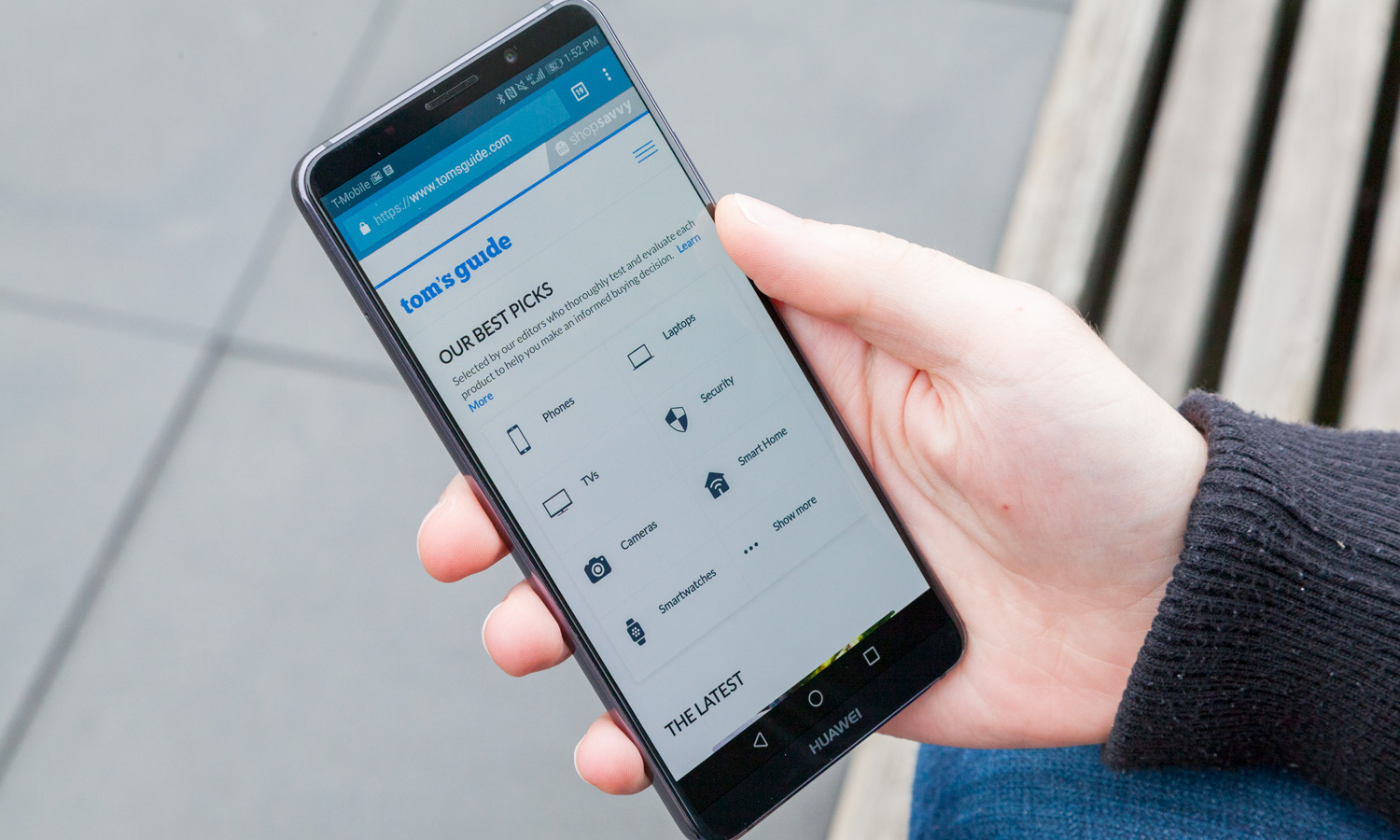
The Mate 10 Pro sandwiches a polished-metal frame between two slabs of curved Gorilla Glass 5, with minimal bezels all around. The screen's border is every-so-slightly less chunky than that of Samsung's Galaxy Note 8. This is no Infinity Display, though, so you don't get the same illusion of depth.
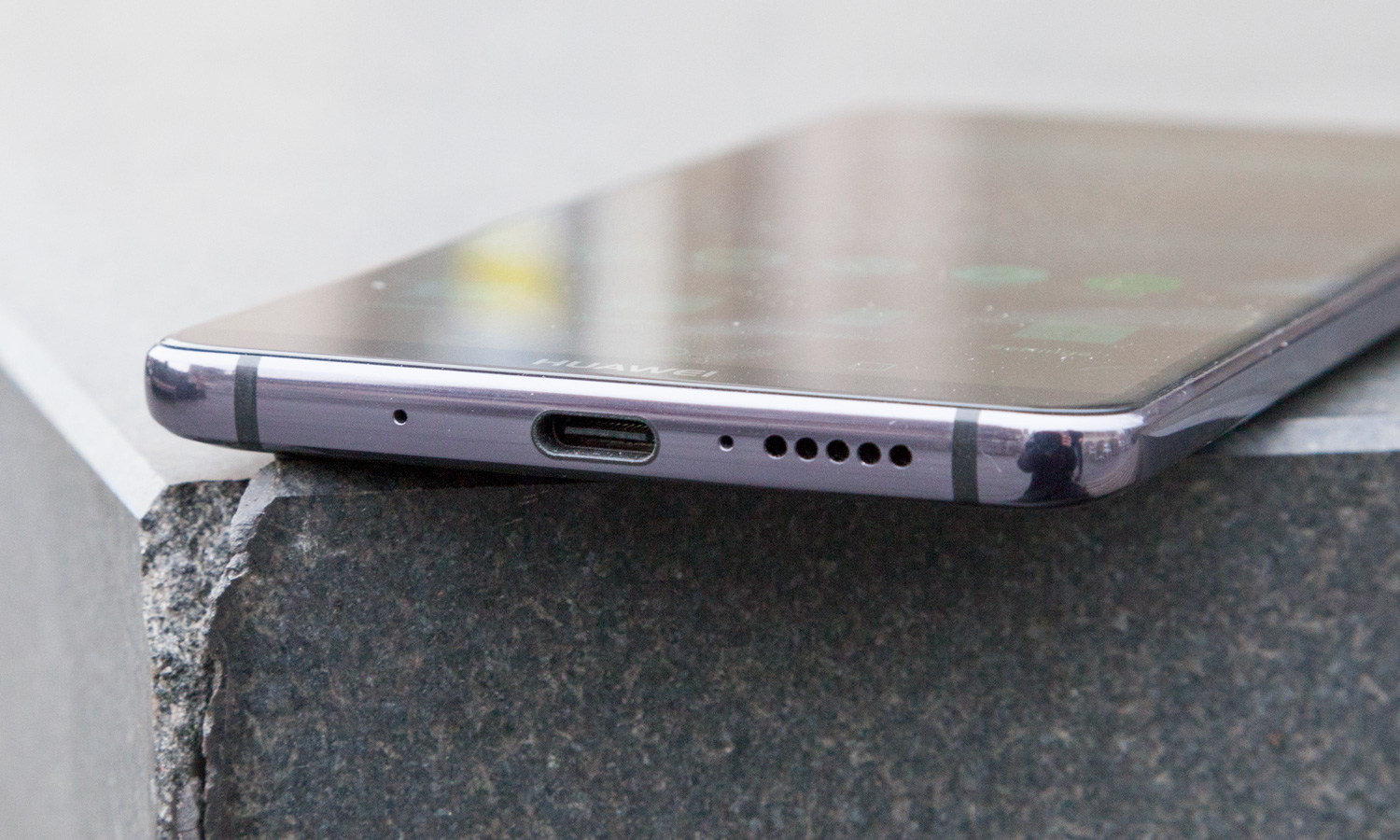
Along the bottom edge, you'll find a USB-C port next to one of two stereo speakers (the other doubles as the earpiece up top), and an IR blaster on the opposite side. Most devices don't feature IR blasters anymore, so the Mate 10 Pro is one of your only options if you want your next smartphone to double as a TV remote. Still, we would have preferred a 3.5-millimeter headphone jack up there instead, as you won't find that jack anywhere on the device.
The metallic band that surrounds the camera provides a distinctive bit of flair that really lifts the otherwise-stoic aesthetic.
Huawei has traded the Mate 9's brushed-metal back for glass, though not for the reason you might think. When Apple moved to glass for the iPhone 8 and iPhone X, the goal was to add wireless-charging support. Huawei has made a similar change, though wireless charging is nowhere to be found on this phone. As a result, the Mate 10 Pro feels a bit less premium than it should, considering the price this phone will likely command.
Get instant access to breaking news, the hottest reviews, great deals and helpful tips.
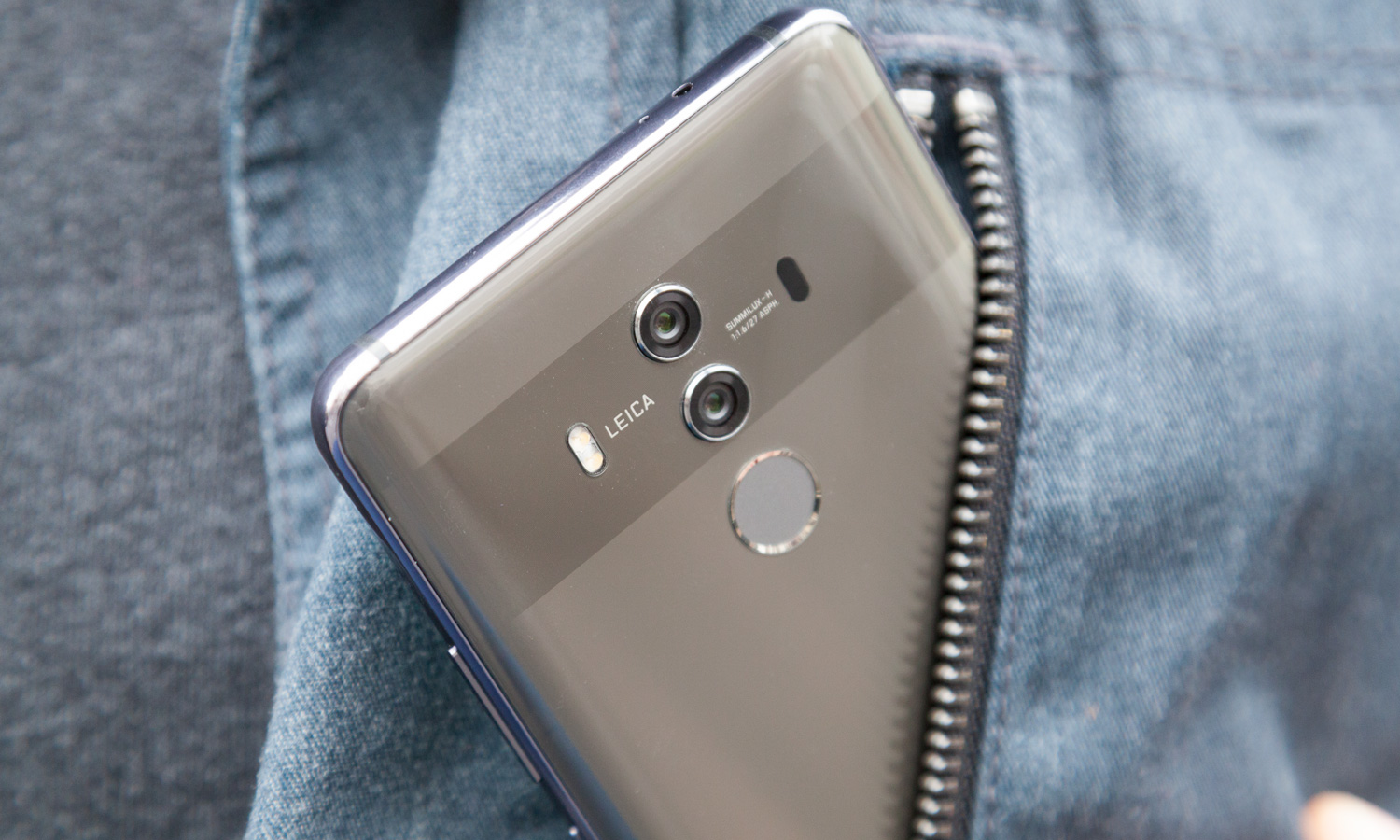
Around the back, you'll still find centrally mounted, Leica-branded dual cameras. This time, they're set in a reflective band that encompasses the entire module, including the flash and sensors. It's a distinctive bit of flair that really lifts an otherwise-stoic aesthetic. Right below the camera module is the rear-mounted fingerprint sensor, which I'm happy to report is lightning-quick — so quick, in fact, that I'd prefer some kind of haptic feedback as a sign of confirmation that it’s done its job.
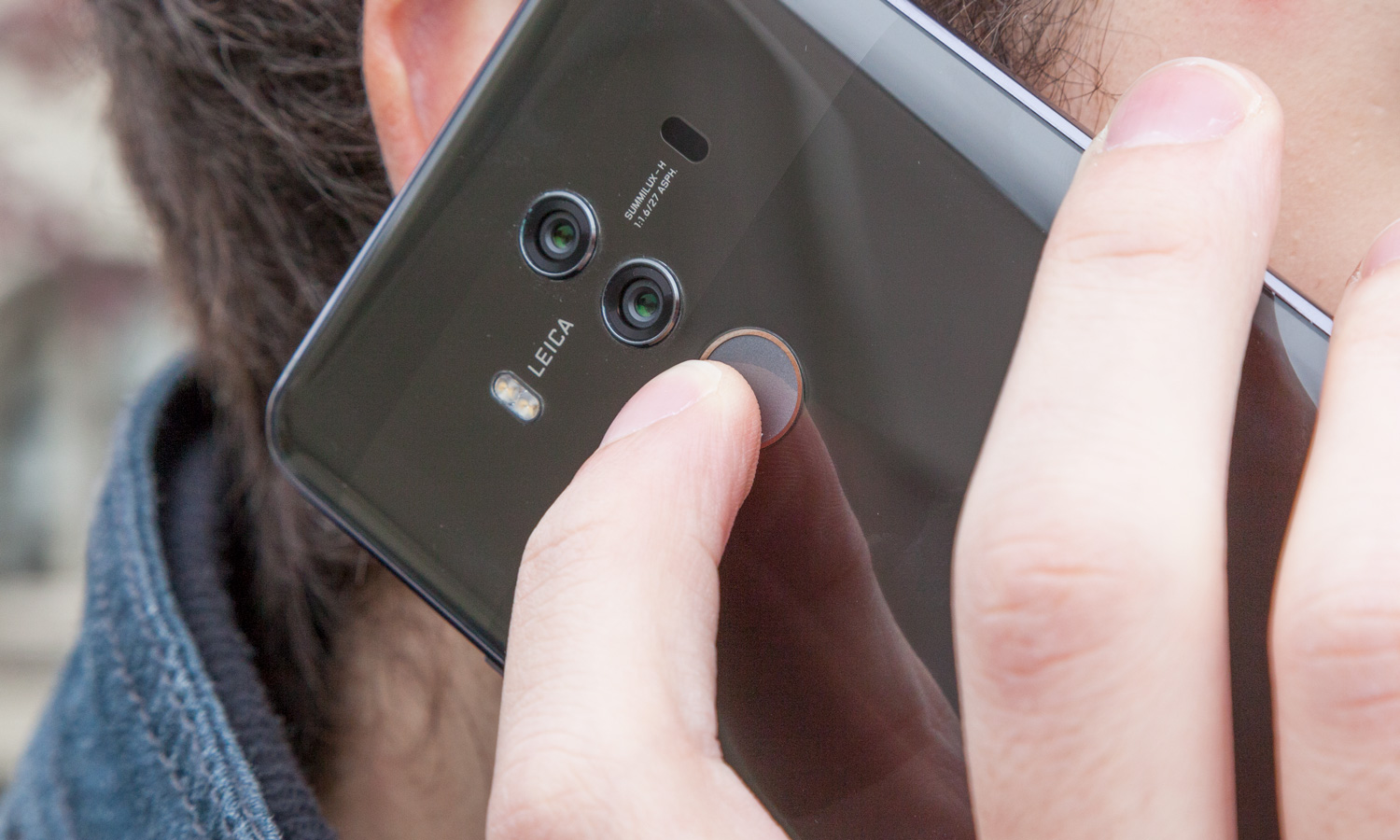
The Mate 10 Pro comes in three colors. Our unit was clad in Titanium Gray, though we've seen the Midnight Blue and Mocha Brown versions and can confirm the device looks classiest and most eye-catching in its cafe-inspired guise.
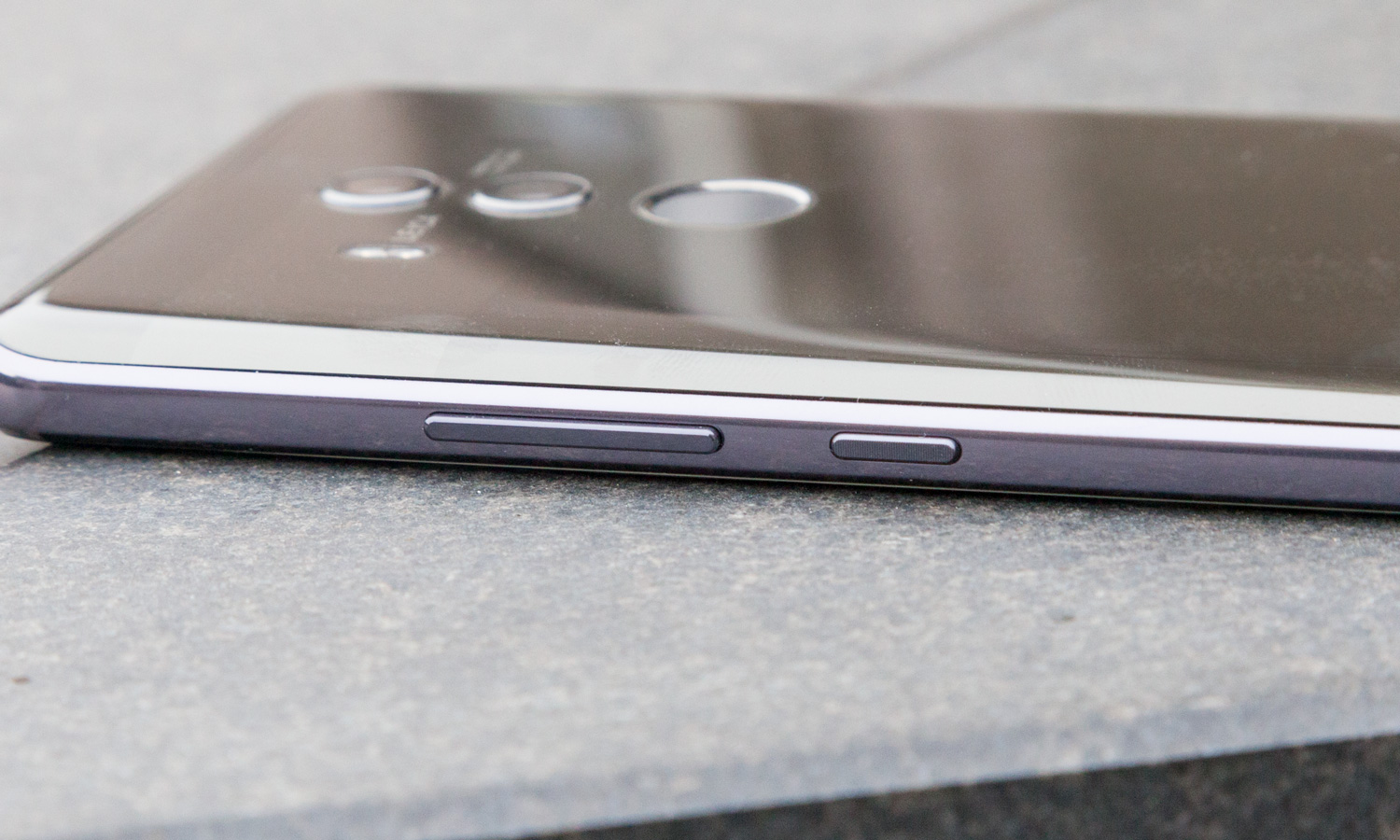
Just like the iPhone 8 and Google's Pixel 2, the Mate 10 Pro benefits from IP67 water and dust resistance, protecting the handset for 30 minutes in up to 3.3 feet of submersion.
Durability: There are tougher phones
We tested the Huawei Mate 10 Pro’s toughness by dropping it on its face onto wood from a height of 4 feet and 6 feet; we then dropped it on its edge and face onto concrete from 4 feet; we then dropped it on its edge and face from 6 feet onto concrete.
Huawei's phone withstood drops from 4 and 6 feet onto wood without issue. It also survived a 4-foot edge drop onto concrete with only minor scratches to the bottom. However, a 4-foot face drop caused the touch screen to stop working in the upper right corner, and a 6-foot edge drop resulted in distorted screen colors on the right side.
A 6-foot face drop onto concrete shattered the Mate 10's screen so thoroughly that several pieces of it flew off completely, revealing the electronics underneath. The Mate 10 Pro ended up with a poor toughness score of 4.3 out of 10.
To see the results of other smartphones, as well as our complete scoring methodology, check out our smartphone drop tests.
Huawei Mate 10 Pro Specs
| Price | $799 |
| OS | Android 8.0 Oreo with EMUI 8.0 |
| Screen Size (Resolution) | 6 inches (2160 x 1080) |
| CPU | Hisilicon Kirin 970 |
| RAM | 6GB |
| Storage | 128GB |
| microSD Slot? | No |
| Rear Camera | 12-MP main, 20-MP monochrome, dual f/1.6 |
| Front Camera | 8-MP, f/2.0 |
| Battery Life (Hrs:Min) | 14:39 |
| Water Resistance | Yes (IP67) |
| Size | 6.07 x 2.93 x 0.31 inches |
| Weight | 6.28 ounces |
Display: Not quite the Note
The Mate 10 Pro's 6-inch, 2160 x 1080 display follows the trend of 2017 flagships, with its AMOLED tech, high dynamic range (HDR10) support and 18:9 aspect ratio. This display is a step up from the 5.9-inch LCD found on the standard Mate 10 — though, oddly, that screen touts a slightly higher resolution than the one in the more expensive model.
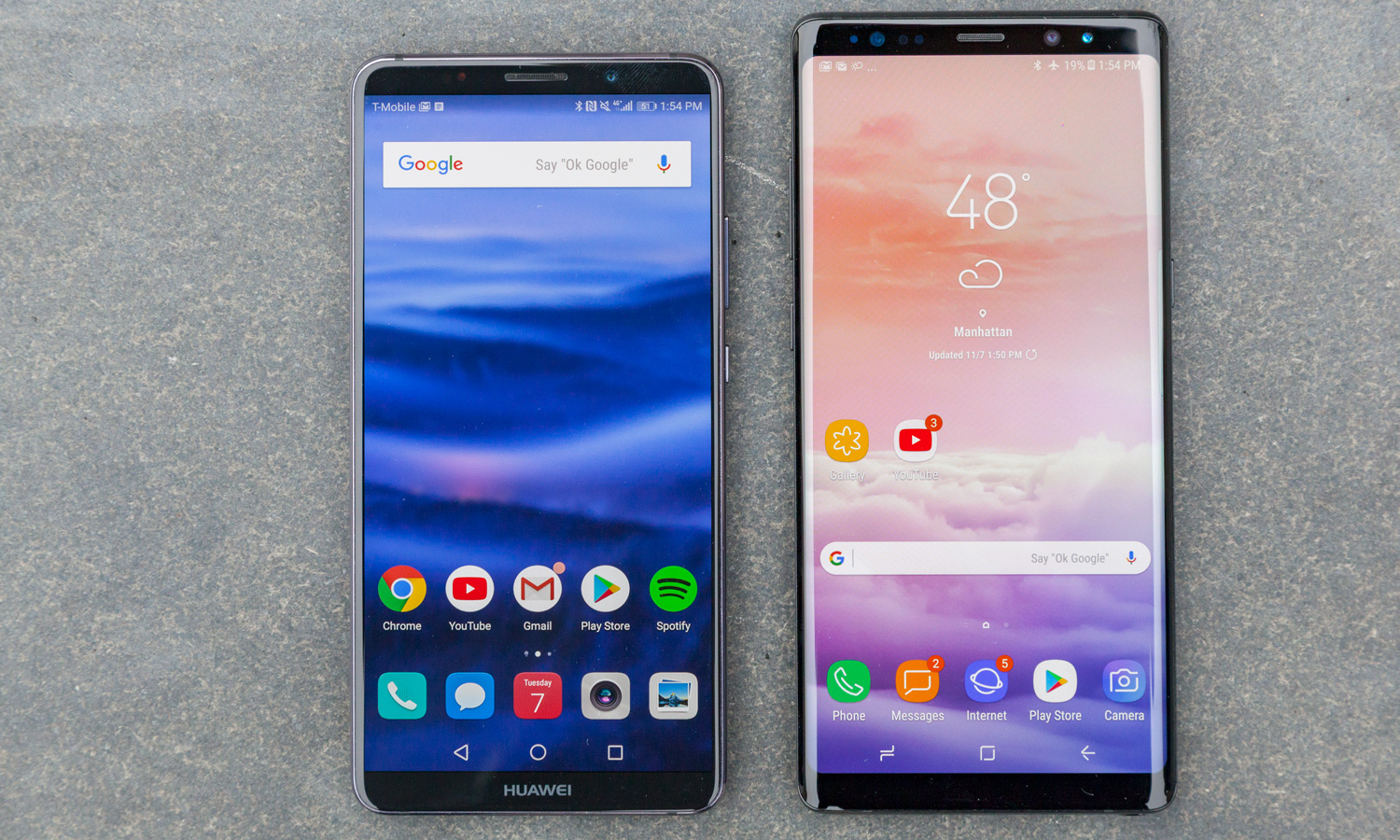
Based on our side-by-side testing, the Mate 10's screen is good as far as AMOLED panels go, but it can't quite measure up to what the Note 8 offers. The significantly lower resolution of the Mate 10 Pro's screen means UI elements and text look more jagged and pixelated upon closer inspection. On the Huawei's Normal color profile, hues are a bit brighter and cooler than in the Note 8's Basic mode, but those shades lack the same deep color range. Viewing angles are a tad worse as well, with a slightly more-pronounced blue cast as you tilt the handset from side to side.
Still, this is a solid display, even if it isn't necessarily the best one available. The Mate 10 Pro registered a peak full-screen brightness of 449 nits, which is slightly above the 433-nit average for smartphones. The display covered 147.2 percent of the sRGB color gamut and notched a Delta-E color-accuracy score of 0.62. The Note 8 fared a bit better, with results of 204.8 and 0.5, respectively. (Color-accuracy scores closer to 0 are better.)
MORE: iPhone X Is King of OLED Screens
Users who prefer more-saturated tones will appreciate the Mate's optional Vivid setting, which dials up the intensity and produces an even-cooler tint. However, the phone's auto brightness mode proved to be a source of serious frustration during both daily use and testing, simply because the setting wouldn't turn off.
Camera: AI-assisted shooter creates brilliant portraits
The Mate 10 Pro's dual cameras represent a series of firsts for Huawei. The handset combines a 12-megapixel main sensor with a 20-megapixel monochrome one, both of which sport f/1.6 apertures — the widest of any camera the company has ever produced at the time of the Mate 10's release. Only the LG V30 equals the Mate 10 Pro's camera, though with just one lens; the Galaxy S9 subsequently surpassed it with a variable aperture that widens to f/1.5 in low light settings.
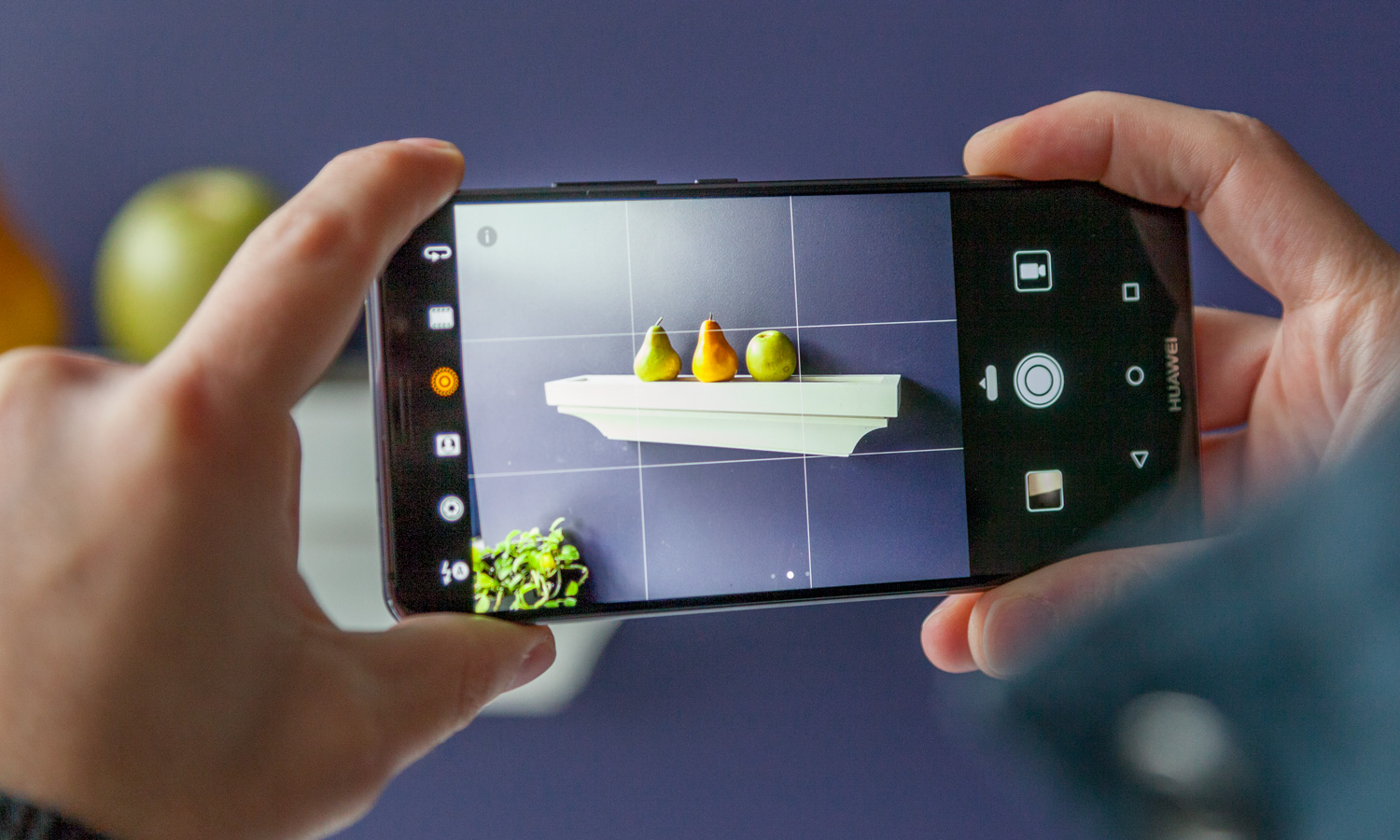
Also impressive, the Mate 10 Pro is Huawei's first smartphone to launch with a dedicated chip for handling artificial intelligence, called the neural network processing unit (NPU). The phone's cameras leverage this unique resource through object recognition by tuning exposure parameters when they identify certain things. There are 13 identifiable scenarios in total, including faces, flowers, plants, food, dogs and cats, and Huawei says it will add more if necessary in future updates. Since we posted our original review, this feature has made its way to other Huawei phones like the P20 Pro (which isn't available in the U.S.) and the Honor View 10 (which is, and a bit cheaper than the Mate 10 Pro).
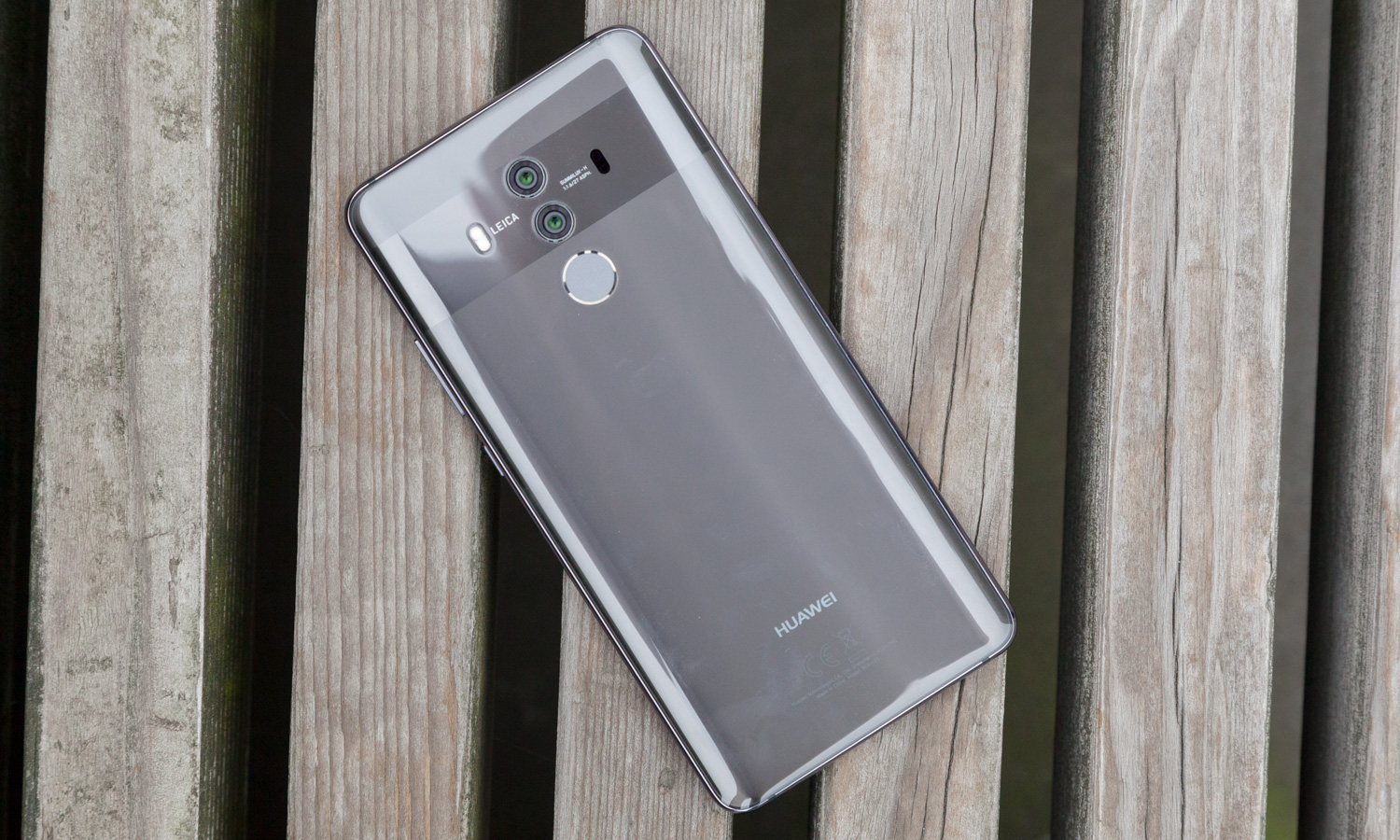
I focused the Mate 10 Pro camera on a document, and the app responded by presenting a little "T" icon below the viewfinder, signifying that the camera was in text mode and had recognized what it was seeing. The phone then sharpened the image, slightly boosted the contrast, and opted for a cooler white balance to improve clarity and help separate the print from the paper.
The Mate 10 Pro consistently outperformed the Galaxy Note 8 in Portrait Mode comparisons.
And we haven't even touched on the sheer number of camera features offered in this phone: Portrait mode, true black-and-white photography and a 2.0x optical zoom, matching offerings from the iPhone X, iPhone 8 Plus and Note 8. The Mate 10 Pro's cameras are about as complete as any you'll find on competing flagships, and in our testing, they proved just as capable.
We pitted the Mate 10 Pro against the Galaxy Note 8 and that phone's dual-rear cameras. In this first photo comparison, the Note 8 breaks out to a strong start, capturing the vivid tapestry of crimson, gold and green in this lush fall scene. Huawei's phone, on the other hand, delivers a sharper but ultimately more muted representation.
Yet the Note 8 wouldn't hold the lead for long. The following images demonstrate how both phones handle portraits, with the Mate 10 Pro benefitting from the aforementioned AI processing core. While it was difficult to quantify precisely how the NPU aided this exposure (you can't turn object recognition off), the Huawei consistently outperformed the Samsung in Portrait Mode.
The Mate 10 Pro's more-aggressive bokeh evokes a more-profound sensation of depth, helping the model burst from the background. The Note 8's attempt is certainly brighter overall but a bit blurrier to my eye, with unrealistic, overpronounced highlights in the subject's skin tone and hair. You will notice some strange artifacting in both shots in specific areas around the model's head, as neither phone perfectly scaled back the blur effect along the boundaries of the foreground.
Moving back indoors for a low-light test, the Note 8 claimed the brighter scene overall, despite the Huawei's much-vaunted aperture advantage. However, the reddish tone of the wooden wall in the background isn't quite true-to-life. And again, if we zoom in, the Note 8 doesn't preserve the same level of detail as the Mate 10 Pro. An ideal photo would mix aspects of both exposures.
There's definitely a pattern here, as the Mate 10 Pro favors sharper but darker exposures, whereas the Note 8 has a tendency to produce punchier colors. Notice how the Samsung picks up the reflection of the blue sky in the hood of this Porsche and brings out the burgundy of the car parked to the left. The Huawei falters in capturing those hues, though it nails the finer details, like the texture of the asphalt.
Our last trial, a selfie of yours truly, shows that the 8-MP front shooters on both phones mostly emulate what we observed from the rear cameras. The Mate 10 Pro displays brighter highlights and darker shadows, while the Note 8 delivers more-robust color universally, at the expense of contrast. And just as before, sharpness remains a part of the story. Notice the differences in my hair and the texture of the canvas on my backpack. The Huawei also lends a subtle blur effect to the trees in the background, a result I prefer.
Performance: Huawei's in-house chip is a winner
Unlike the majority of Android flagships powered by Qualcomm Snapdragon chipsets, the Mate 10 Pro employs Huawei's own Kirin 970 silicon. But in typical usage, you'd never know there was any difference; the device performs just as flawlessly as the best phones we've tested this year.
The Mate 10 Pro achieved a multicore Geekbench 4 score of 6,784, edging out the Pixel 2, at 6,282, and Note 8, at 6,564. However, Huawei was slightly off the mark in the Ice Storm Unlimited 3D graphics test, in which the device notched a result of 31,908. The Note 8 achieved 39,834.
Still, the 6GB of RAM in our Mate 10 Pro kept things humming at a reasonable clip, and we didn't encounter any lag when switching between apps, using multiwindow mode or snapping photos all day. The phone does get quite warm when charging, however — something to keep in mind as you put the handset through its paces.
For a real-world test, we had the Mate 10 Pro transcode a 4K video file into 1080p using the InShot app, then compared its time against the Galaxy Note 8. The Huawei finished the task in 58 seconds, a hair faster than the Samsung at 1 minute and 4 seconds. We typically use Adobe Clips for our video editing tests, but the app consistently crashed each time we attempted to run it on the Mate 10 Pro.
There's also the NPU to talk about. Huawei's co-processor is the first in an Android phone built specifically for handling AI. Huawei says the chip will keep the Mate 10 Pro running as smoothly two years into its lifespan as it does the day it's taken out of the box, but for now, that's a claim that we can't substantiate.
Battery Life: The new flagship leader
The Mate 10 Pro's exceptional battery life is one big reason why you'd opt for this machine over other top flagships.
The first time we tested the Mate 10 Pro back in the fall, its 4,000-mAH battery delivered 14 hours and 33 minutes of web surfing on T-Mobile's LTE network, which was good enough to beat the Note 8 by more than 3 hours. But that was the international model, which Huawei tells us wasn't optimized for U.S. networks and cellular bands like the version the company has just released in the States.
We recently got our hands on that U.S. variant, and the results were even a hair better than what we achieved the first time. This Mate 10 Pro lasted six minutes longer, for a total time of 14 hours and 39 minutes. For reference among premium flagships, the Pixel 2 XL lasted 12:09 and the iPhone X, 10:49. The iPhone 8 Plus hit 11:16.
MORE: Smartphones with the Longest Battery Life
Huawei has also packed in a reverse-charging mode, allowing you to top off other devices using the Mate 10 Pro's battery. That's something you'd expect to see in a rugged phone like the CAT S41, rather than a device this premium. Plus, with the included SuperCharge adapter, the Mate 10 Pro can reach a 60 percent charge from empty in about 30 minutes. That's a welcome addition, especially considering the size of the Mate 10 Pro's battery — though, again, we would have liked to see Huawei make the most of that glass back by supporting wireless charging.
Software: EMUI offers unique features, but needs polish
Android 8.0 Oreo is paired with Huawei's EMUI interface in the Mate 10 Pro. If you've never used EMUI, strap in — it takes a little getting used to.
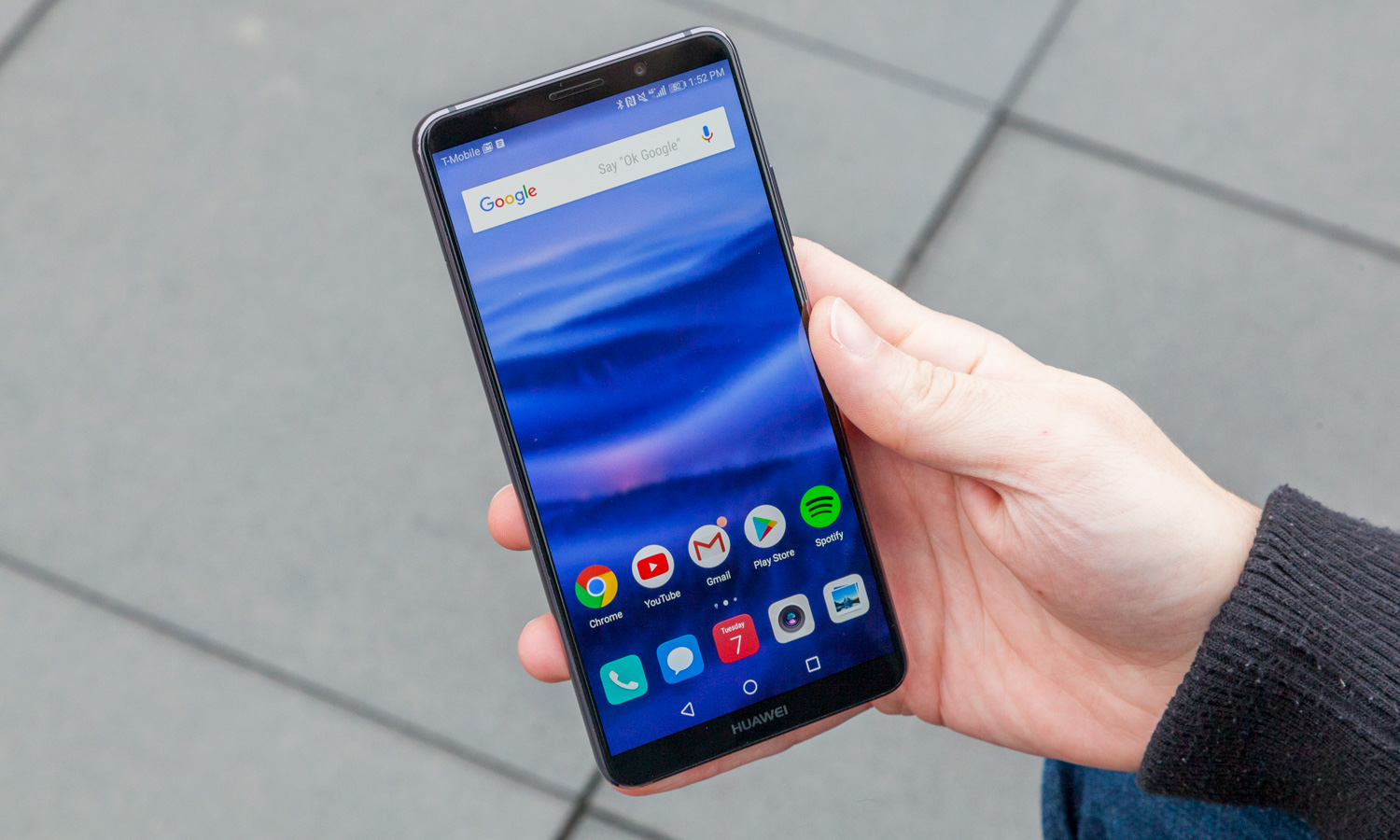
The most defining characteristic of EMUI is the glut of options Huawei provides for literally everything, from home screens to themes to battery-saving modes and even navigation. The Mate 10 Pro gives you the option to completely ignore Android's built-in on-screen nav bar, and instead use a single, movable floating button that can be pressed, held and dragged for various functions. This allows you to use the device more easily with one hand, but as it's drawn over on-screen content, it's pretty much always in the way.
The skeuomorphic icons for system apps feel like little portals back to 2010.
Really, that button encapsulates EMUI in a nutshell: The feature is there if you want it and can be dismissed if you don't, but either way, it adds to the noise of the software. There's just too much going on, and the result is an experience that simply doesn't look as good or feel as swift as it should.
Let me give an example. On many occasions during my time with the Mate 10 Pro, I accessed the camera from its lock screen shortcut. I’d then try to fiddle with the camera settings, which end up stacked along the left edge when you’re holding the device in landscape mode, occupying what would typically be the top of the display. Whenever I did this, the phone would stop me with a full-screen overlay telling me not to cover the top of the screen. Huawei calls this "Touch Disable Mode," and it's designed to prevent unintentional taps when the phone is in your pocket. But in this case, it prevented me from taking photos properly, simply because I hadn't unlocked the phone first — which negated the whole purpose of the camera shortcut anyway.
Those are the kinds of little annoyances that build as you navigate the Mate 10 Pro, and they're made even worse by EMUI's dated and inconsistent design direction. The skeuomorphic icons for some system apps, like Email and Files, feel like little portals back to 2010, and the text scaling fluctuates from the settings menu to the notifications shade to third-party apps, which feels like an inefficient use of all that screen space.
That's not to say all Huawei's enhancements are unwelcome. Longtime users of the company's handsets will appreciate the return of knuckle-tapping gestures to trigger certain actions, like screenshots and multiwindow mode. And the fingerprint sensor can be used for gestures as well, like swiping to view notifications.
Actually, that fingerprint sensor is central to one of my favorite features of the Mate 10 Pro: Private Space. Originally appearing on the Mate 9, Private Space allows you to create an alternate profile that is accessible only through a specific fingerprint or unlock code, but is otherwise completely hidden from the device. Apps, accounts and settings are sandboxed in each profile, so the secret one almost acts as a completely separate phone.
The Mate 10 Pro may not be pound-for-pound the best smartphone we've used all year, but Huawei is chasing features nobody else is.
Meanwhile, another returning feature, App Pair, brings similar functionality to individual apps. With App Pair, you can keep two versions of Facebook on your device, for example, with each one connected to a different account.
Price and Availability
In the U.S., the Mate 10 Pro is available unlocked from Huawei's own website, as well as an assortment of third-party retailers including Amazon, Best Buy, Microsoft, B&H and Newegg. The phone lists at $799, though many retailers now offer it at a lower price. As it's a GSM device, the Mate 10 Pro not work on Verizon or Sprint. Huawei will offer the Mate 10 Pro in two colors: Midnight Black and Titanium Gray.
Contrary to reports leading up to Huawei's announcement at CES 2018 – as well as a statement by CEO Richard Yu – the Mate 10 Pro is not sold through any American carriers. According to a Wall Street Journal report, Huawei had originally struck a deal with AT&T to launch the phone. However, the network backed out of the agreement a day before Huawei was scheduled to announce it. There had been rumors that Verizon was also intending to sell the Mate 10 Pro this summer, though that plan may also be in jeopardy.
For those with a bit more to spend, there's the Porsche Design version of the Mate 10 Pro. This limited edition sports a unique body and double the storage space, as well as a bunch of goodies including a car charger, flip cover case and a pair of earbuds. It retails for $1,225.
Bottom Line
With the Mate 10 Pro, Huawei hasn't just delivered a product on par with those of the company's main rivals — it's also given us a top-line smartphone that sets a new standard for battery life among high-end phones, and AI-assisted cameras that come alive when inspiration strikes you.
It's not perfect, though. The EMUI interface could use some trimming down, and although there's no doubting the build quality, the Mate's design isn't very innovative. But even in areas where the Mate 10 Pro doesn't quite lead the way, it still holds its own. The OLED screen is solid, and software features like knuckle gestures, Private Space and App Pair either rarely or never appear on other handsets – and that includes the iPhone X and Galaxy Note 8.
Credit: Tom's Guide
Adam Ismail is a staff writer at Jalopnik and previously worked on Tom's Guide covering smartphones, car tech and gaming. His love for all things mobile began with the original Motorola Droid; since then he’s owned a variety of Android and iOS-powered handsets, refusing to stay loyal to one platform. His work has also appeared on Digital Trends and GTPlanet. When he’s not fiddling with the latest devices, he’s at an indie pop show, recording a podcast or playing Sega Dreamcast.
-
BRANDON DAVIS The article was excellent (I'm rather a Huawei fan), but failed to review the connectivity of the phone. Specifically - and especially in T-Mobile's case - buyers are going to be increasingly aware of whether a phone has the requisite hardware and software to support extended range (1GB) LTE. This is being rolled out *now* to about 500 metropolitan areas (including our own Spokane area ...and we ain't that big lol).Reply
...my understanding is the hardware currently requires the Snapdragon 735, four-branch antenna diversity and four physical antennas laid into the phone to support 4x4 MIMO, the Qualcomm Snapdragon X16 gigabit LTE modem, and 256QAM down and 64QAM up.
Does Huawei have a supported equivalent in their current lineup?
...this has already affected my next smartphone choice (I'm in the market *now*).
Frankly, I'm not willing to buy a phone at this price point that doesn't support this tech' *now*.
...I'd love for it to be a Huawei (we own a couple of the mid-range Honors, and have been *quite* happy with them). But. No fast LTE support? - Not interested.
...so I'd hope Tom's would start making inclusion of fast LTE support "de rigueur" for flagship phones going forward.
My two bits. Thanks.
